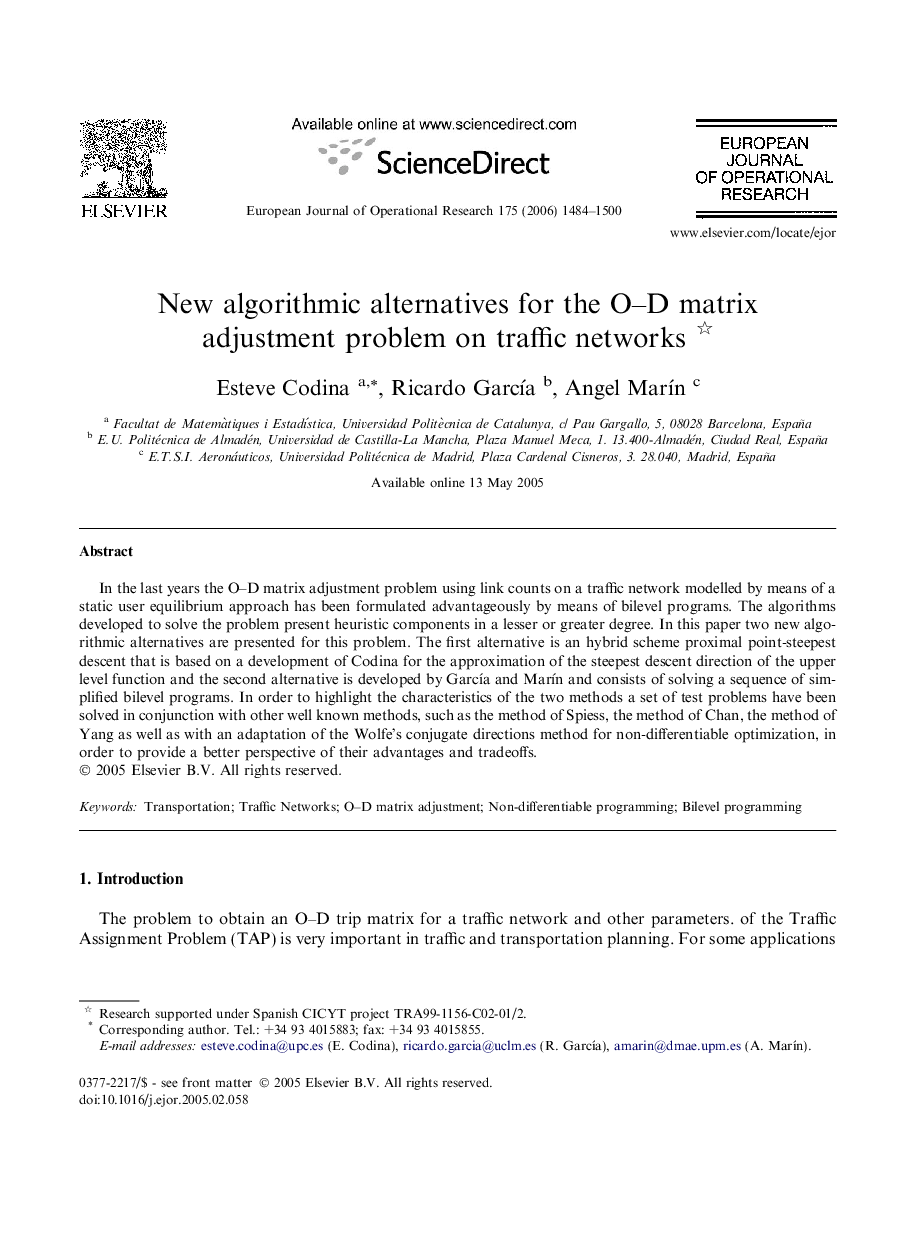| Article ID | Journal | Published Year | Pages | File Type |
|---|---|---|---|---|
| 482553 | European Journal of Operational Research | 2006 | 17 Pages |
In the last years the O–D matrix adjustment problem using link counts on a traffic network modelled by means of a static user equilibrium approach has been formulated advantageously by means of bilevel programs. The algorithms developed to solve the problem present heuristic components in a lesser or greater degree. In this paper two new algorithmic alternatives are presented for this problem. The first alternative is an hybrid scheme proximal point-steepest descent that is based on a development of Codina for the approximation of the steepest descent direction of the upper level function and the second alternative is developed by García and Marín and consists of solving a sequence of simplified bilevel programs. In order to highlight the characteristics of the two methods a set of test problems have been solved in conjunction with other well known methods, such as the method of Spiess, the method of Chan, the method of Yang as well as with an adaptation of the Wolfe’s conjugate directions method for non-differentiable optimization, in order to provide a better perspective of their advantages and tradeoffs.
